Past Recipients
Athletics Keemotion Camera System
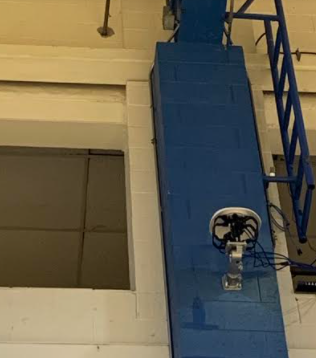 The Keemotion Camera System is an automated camera that films practices and games unmanned. It is a 3-lens camera that is mounted in between the two press box windows on the east side of the gym. This allows direct access to the network that is built up in the press box which allows us to stream the practice or game live directly to computers, iPad, and any website teams would like. This also adds increased revenue to the Athletic department through added sponsorship elements during streaming.
The Keemotion Camera System is an automated camera that films practices and games unmanned. It is a 3-lens camera that is mounted in between the two press box windows on the east side of the gym. This allows direct access to the network that is built up in the press box which allows us to stream the practice or game live directly to computers, iPad, and any website teams would like. This also adds increased revenue to the Athletic department through added sponsorship elements during streaming.
Gear up STEM Camp
 This was the first LSSU GEAR UP STEM camp held at the University campus in a number of years. This enrichment grant helped cover costs for two large purchases for the students; allowing each student that participated to keep their math kit that they used during their math sectioned time, but also their shirts they were provided upon registration.
This was the first LSSU GEAR UP STEM camp held at the University campus in a number of years. This enrichment grant helped cover costs for two large purchases for the students; allowing each student that participated to keep their math kit that they used during their math sectioned time, but also their shirts they were provided upon registration.
Campers were able to perform the basic and traditional mathematical operations of addition, subtraction, multiplication, and division using geometric constructions with a compass and straightedge. The campers were able to distinguish the difference between a drawing and a construction and were able to see how numbers could be “constructed” even irrational numbers like the square root of 2. Afterwards the campers were able to recreate their constructions with technology using either Geometer Sketchpad or Geogebra.
Geriatric Enhanced Simulation
 The LSSU Foundation Grant award was used to address an immediate need for clinical placement and clinical realism through the purchase of the Nursing Anne Simulator geriatric add-on skin set. The skin set was implemented immediately upon receipt of the equipment. The geriatric skin set physically transformed the Simulator to show an aged look and added the physical realism necessary to inspire emotional investment without sacrificing function.
The LSSU Foundation Grant award was used to address an immediate need for clinical placement and clinical realism through the purchase of the Nursing Anne Simulator geriatric add-on skin set. The skin set was implemented immediately upon receipt of the equipment. The geriatric skin set physically transformed the Simulator to show an aged look and added the physical realism necessary to inspire emotional investment without sacrificing function.
Lake Whitefish and Zooplankton relations in Lakes Michigan, Huron, and Superior
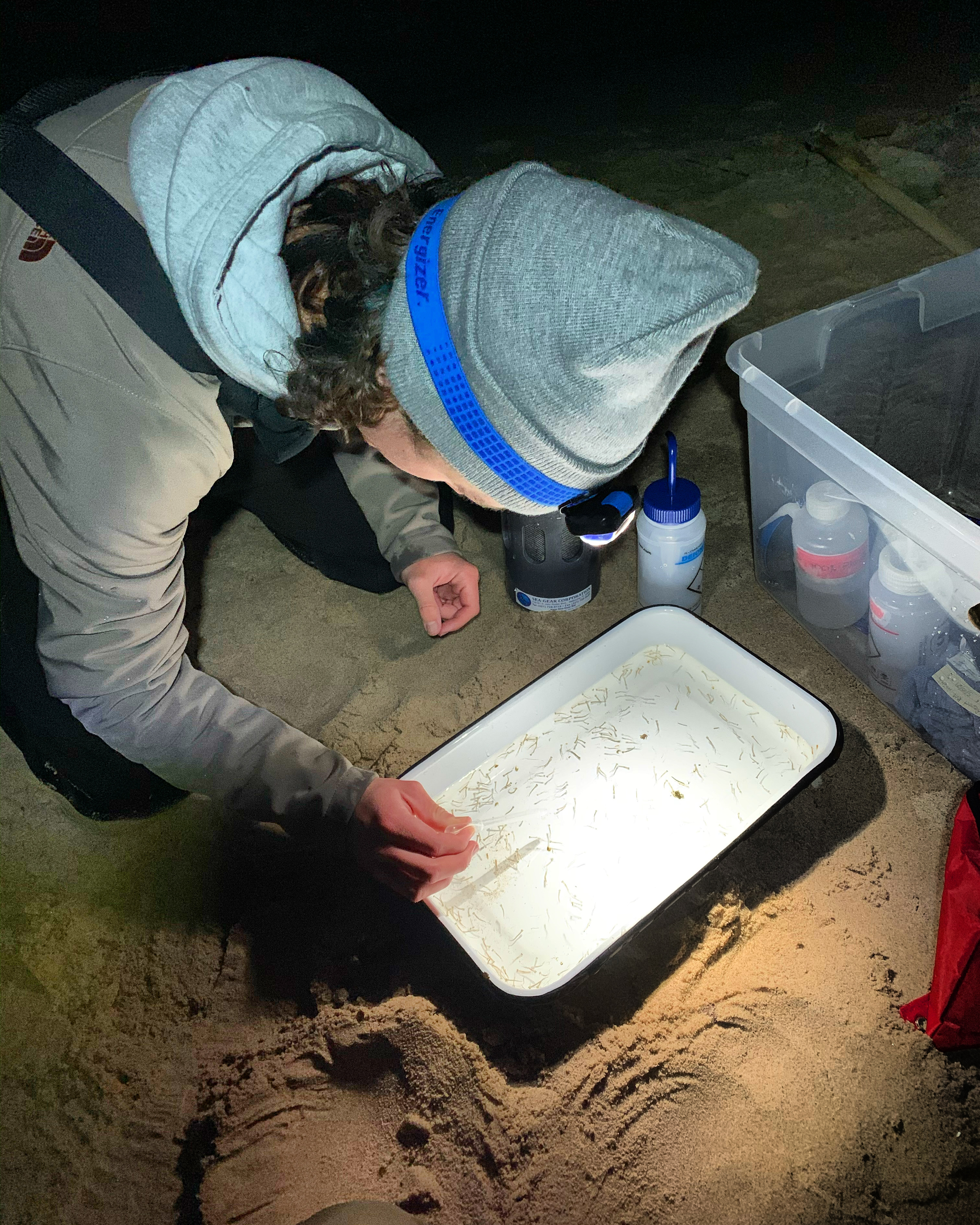 The lake whitefish is a commercially, recreationally, and culturally important fish in our region. However, their population has been on the decline. This began around the time that invasive zebra mussels arrived. These mussels feed on phytoplankton, reducing zooplankton then as well. Young, newly hatched larval fish need zooplankton to survive. One thought for the lake whitefish decline is that this is due to decreased food quantity and quality for larval lake whitefish.
The lake whitefish is a commercially, recreationally, and culturally important fish in our region. However, their population has been on the decline. This began around the time that invasive zebra mussels arrived. These mussels feed on phytoplankton, reducing zooplankton then as well. Young, newly hatched larval fish need zooplankton to survive. One thought for the lake whitefish decline is that this is due to decreased food quantity and quality for larval lake whitefish.
Additionally, we know that fish and zooplankton habitat use can change at night versus day, but this has not been researched much in the Great Lakes.
This project samples larval lake whitefish and zooplankton at day and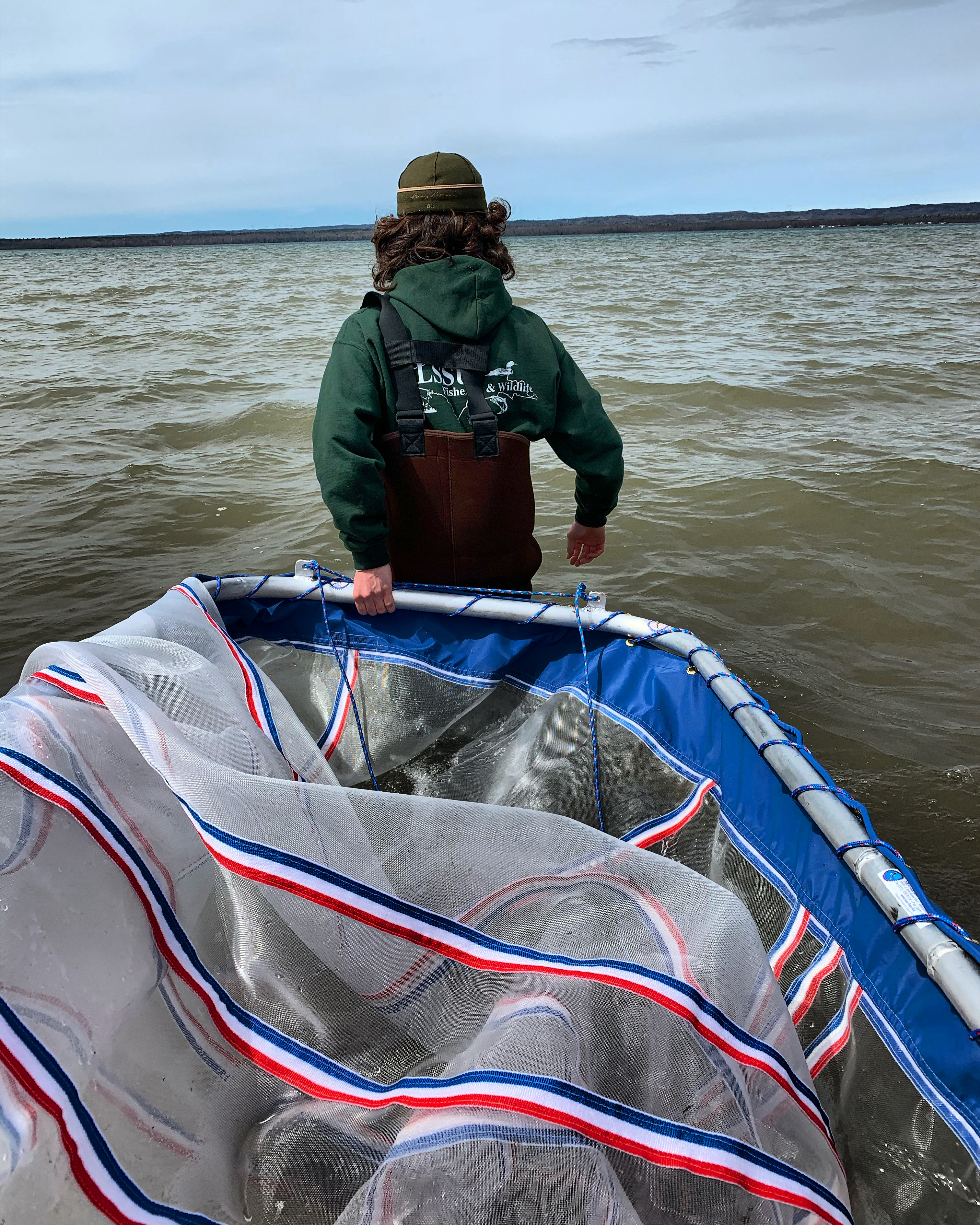 night.
night.
This project has also gained attention from collaborating agencies, enhancing my professional development, as well as increasing the sample size. Samples are received from the USFWS in Green Bay, WI, the MDNR in Charlevoix, MI, and the Little Traverse and Grand Traverse Bay Bands of Indians. The project worked closely with the Sault Tribe of Chippewa Indians here in the Eastern UP. All are helping me quantify the relationship between this valuable species (lake whitefish) and their food (zooplankton) at day versus night.
Psychology Research Grants
The Foundation provided funding for two Psychology seniors to complete high quality research projects though use of online platforms.
Two students’ research projects were funded through the funding provided through the Foundation. These were high quality, meaningful projects in areas that had not been well studied. The two projects studied are listed below. Adverse Childhood Experiences and Adult Sexual Practices. Emily Pentecost. Lake Superior State University. Sponsored by Dr. H. Russell Searight.
Adverse Childhood Experiences and Adult Sexual Practices. Emily Pentecost. Lake Superior State University. Sponsored by Dr. H. Russell Searight.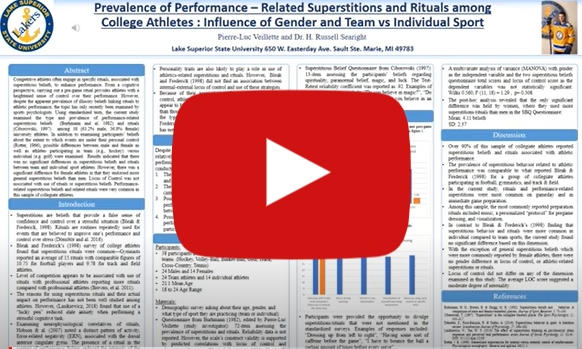
Relationship between superstitions and rituals among college athletes. Pierre-Luc Veillette. Lake Superior State University. Sponsored by Dr. H. Russell Searight.
Synchronous Learning
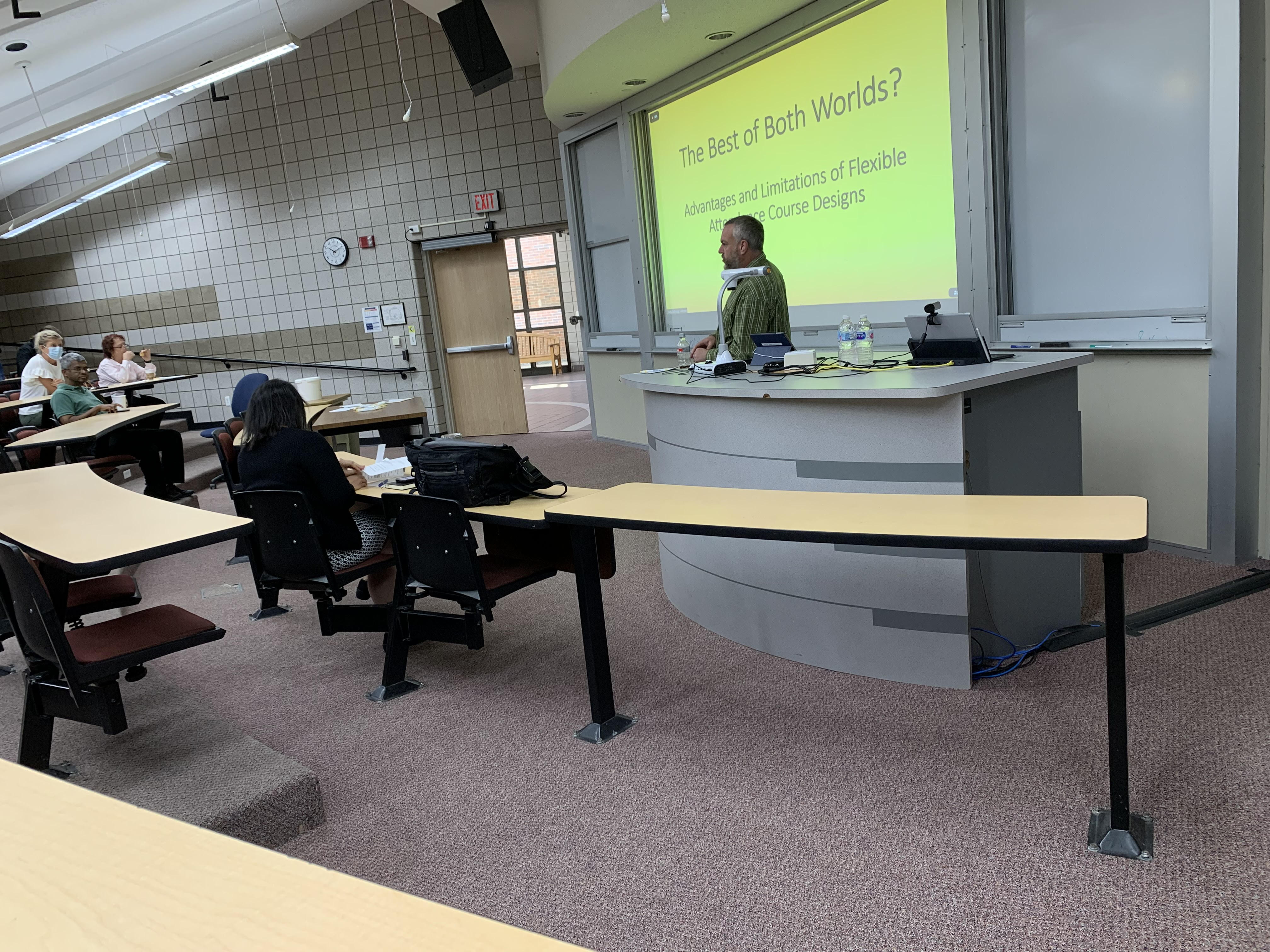 Improvements and upgrade the synchronous learning capacity in were added to Library 203 by adding audio and video capacity this summer and are ready for classes in the fall. Along with other library funding, we were able to install 15 microphones that hang from the ceiling, offer the instructor a cordless microphone to wear, which all feed through a mixer which connects directly to the Zoom Room computer. This allows for remote students to be able to hear all activity in the classroom very clearly no matter where the sound is coming from. The professor can now walk around the room and be heard clearly no matter where they are standing or which way they are facing. In addition, we added two large monitors mounted in the back of the room to allow the faculty to see both what they are presenting AND who they are presenting to.
Improvements and upgrade the synchronous learning capacity in were added to Library 203 by adding audio and video capacity this summer and are ready for classes in the fall. Along with other library funding, we were able to install 15 microphones that hang from the ceiling, offer the instructor a cordless microphone to wear, which all feed through a mixer which connects directly to the Zoom Room computer. This allows for remote students to be able to hear all activity in the classroom very clearly no matter where the sound is coming from. The professor can now walk around the room and be heard clearly no matter where they are standing or which way they are facing. In addition, we added two large monitors mounted in the back of the room to allow the faculty to see both what they are presenting AND who they are presenting to.
